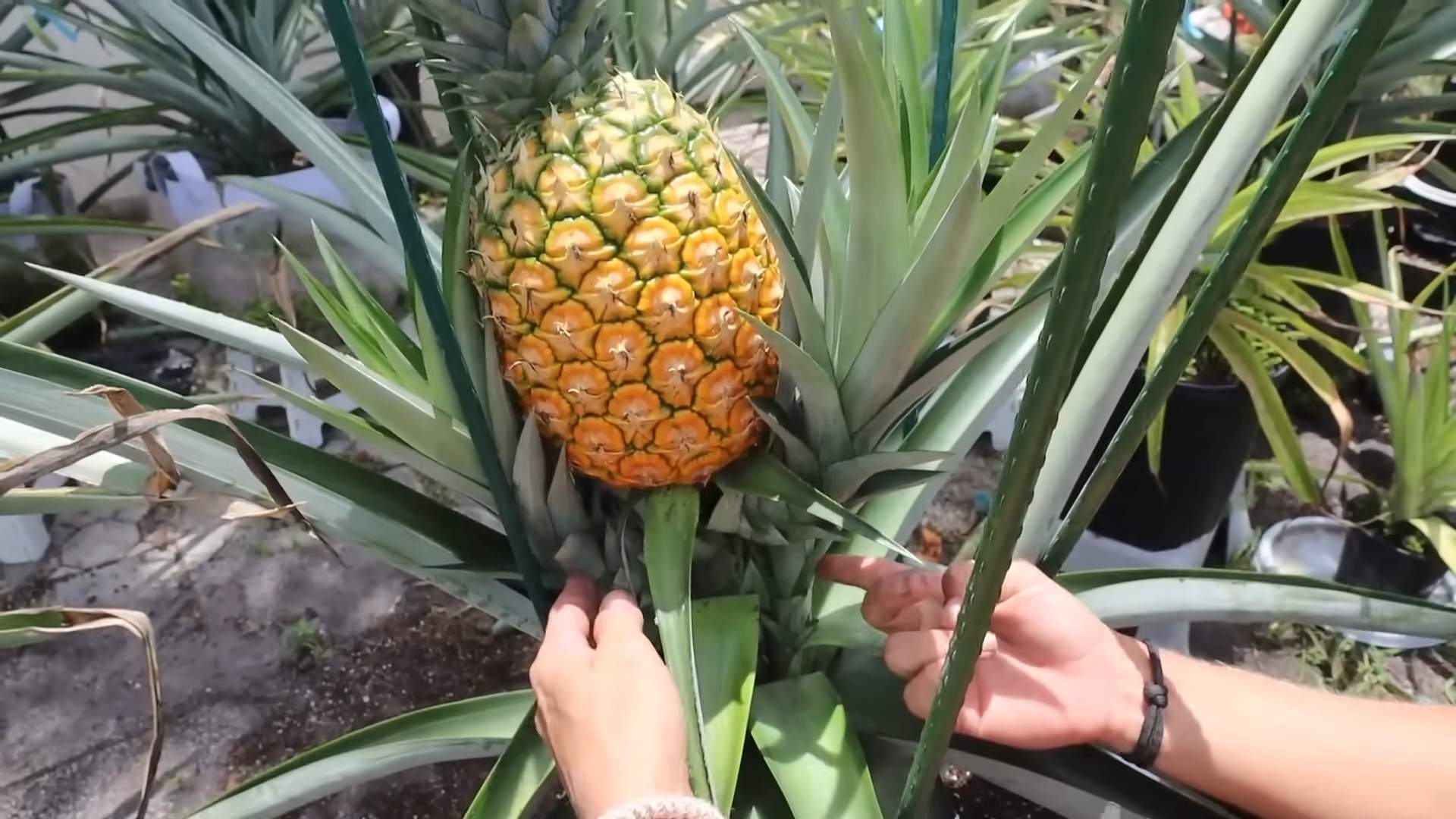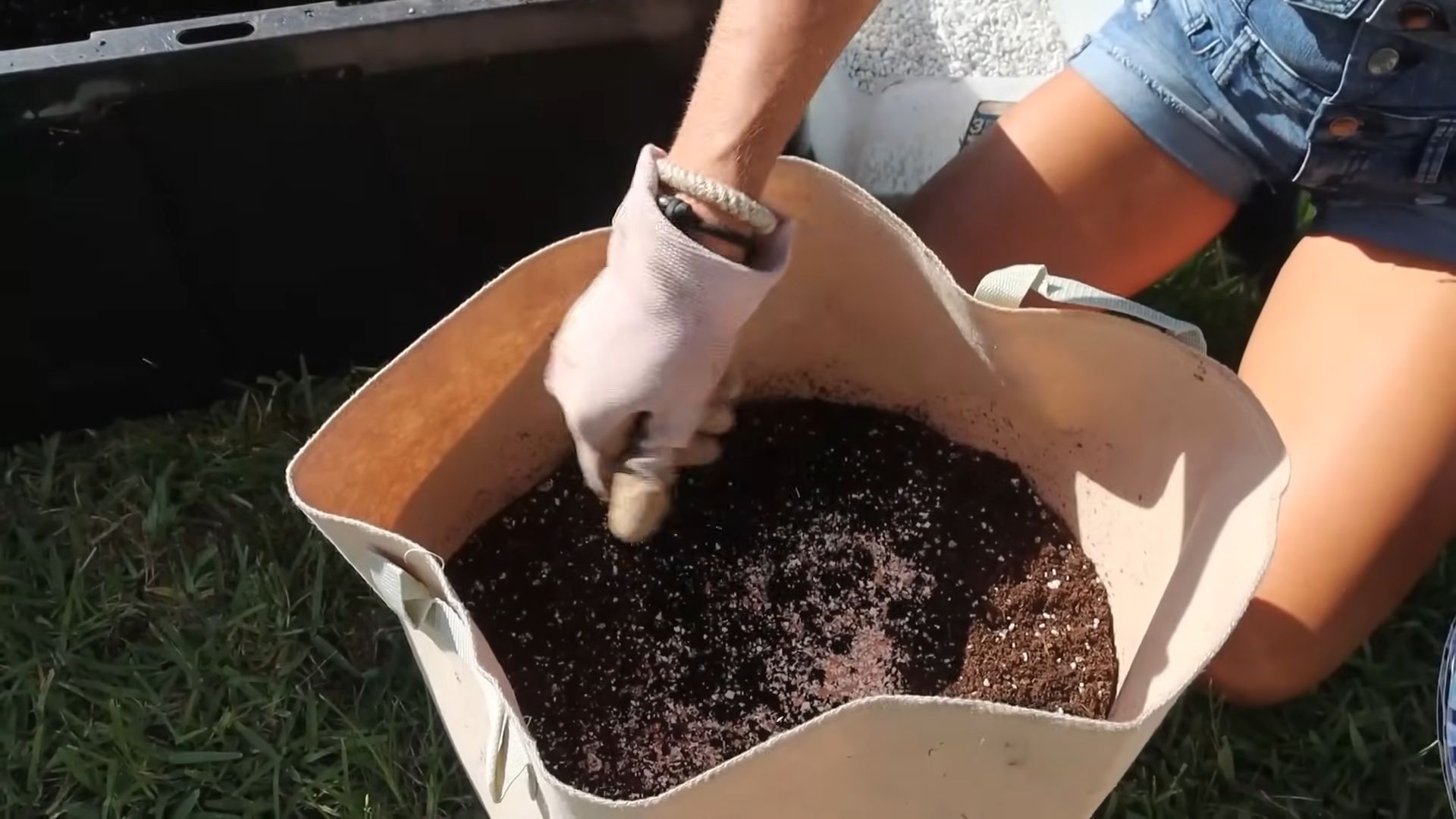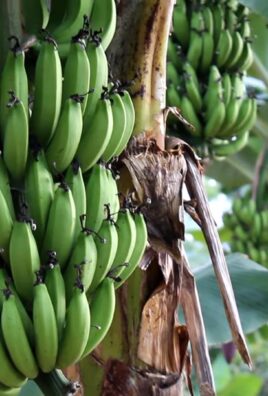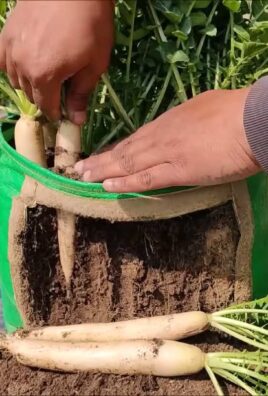Grow giant pineapples at home? Absolutely! Imagine the look on your neighbor’s faces when they see you harvesting a massive, juicy pineapple right from your own backyard. It sounds like a tropical dream, doesn’t it? Well, it’s more attainable than you might think, and this DIY guide is going to show you exactly how to make it a reality.
Pineapples, originally native to South America, have a rich history, traveling the globe and becoming a symbol of hospitality and luxury. From gracing royal tables to becoming a staple in tropical cocktails, the pineapple’s journey is as fascinating as its flavor. But you don’t need a tropical plantation to enjoy the fruits of your labor.
In today’s world, where fresh, homegrown produce is increasingly valued, learning how to grow giant pineapples at home offers a fantastic way to connect with nature, reduce your grocery bill, and impress your friends and family. Plus, let’s be honest, who wouldn’t want to brag about growing their own enormous pineapple? This DIY trick is perfect for anyone looking to add a touch of the exotic to their garden and enjoy the unparalleled taste of a truly fresh, homegrown pineapple. So, grab your gardening gloves, and let’s get started on this exciting adventure!

Grow Giant Pineapples at Home: A DIY Guide
Hey there, fellow plant enthusiasts! Ever dreamt of harvesting your own juicy, oversized pineapple right from your backyard? Well, dream no more! I’m going to walk you through a surprisingly simple DIY project that will have you growing giant pineapples in no time. It might sound intimidating, but trust me, with a little patience and the right steps, you’ll be enjoying homegrown pineapple goodness before you know it.
Choosing Your Pineapple Top
The first step to pineapple success is selecting the right starting material. You can’t just plant any old pineapple top and expect a giant fruit. Here’s what to look for:
* Healthy Leaves: The leaves should be a vibrant green, free from blemishes, spots, or signs of disease. Avoid tops with brown or yellowing leaves.
* Firm Base: The base of the top, where it was cut from the fruit, should be firm and free from rot. Give it a gentle squeeze to make sure it’s not mushy.
* Mature Fruit: Choose a pineapple that is ripe but not overripe. An overripe pineapple might have a top that is already starting to deteriorate.
* Variety Matters: While any pineapple top can technically grow, certain varieties are known for producing larger fruit. Look for varieties like ‘Smooth Cayenne’ or ‘MD-2’ (also known as Gold pineapple) if you want to maximize your chances of growing a giant pineapple. These are commonly found in grocery stores.
Preparing the Pineapple Top for Planting
Okay, you’ve got your perfect pineapple top. Now it’s time to prepare it for planting. This is a crucial step, so pay close attention!
1. Twist and Remove: Hold the pineapple fruit firmly and twist the top off. You might need to use a bit of force, but be careful not to damage the top.
2. Remove Lower Leaves: This is where we encourage root growth. Carefully peel off the bottom few layers of leaves from the base of the top. You should expose about an inch or two of the stem. This will reveal the small root buds that will eventually develop into roots.
3. Let it Dry (Callousing): This is super important! Place the pineapple top in a cool, dry place for about a week. This allows the cut end to callous over, preventing rot when you plant it. I usually put mine on a paper towel in a well-ventilated area. You’ll notice the cut end drying out and forming a protective layer.
4. Rooting Hormone (Optional): While not essential, dipping the base of the top in rooting hormone can help speed up the rooting process. Follow the instructions on the rooting hormone package.
Rooting Your Pineapple Top in Water (Optional)
While you can plant directly into soil, I’ve found that rooting the pineapple top in water first can give it a head start. This allows you to see the roots developing, which is super satisfying!
1. Prepare a Container: Choose a clear glass or jar that is wide enough to hold the pineapple top without it tipping over.
2. Add Water: Fill the container with enough water to cover the exposed stem, but not the leaves.
3. Place the Top: Carefully place the pineapple top in the water, making sure the leaves are above the waterline.
4. Find a Sunny Spot: Place the container in a warm, sunny location. A windowsill is perfect.
5. Change the Water Regularly: Change the water every few days to keep it fresh and prevent algae growth.
6. Wait for Roots: Be patient! It can take several weeks for roots to develop. You should start to see small roots emerging from the base of the stem. Once the roots are about an inch or two long, it’s time to plant.
Planting Your Pineapple Top
Alright, your pineapple top is ready to go into the soil! Here’s how to plant it for optimal growth:
1. Choose the Right Pot (or Location): If you’re growing in a pot, choose a large container (at least 10-12 inches in diameter) with good drainage. Pineapples need plenty of room for their roots to grow. If you live in a warm climate (USDA zones 9-11), you can plant directly in the ground. Choose a sunny spot with well-draining soil.
2. Prepare the Soil: Pineapples prefer slightly acidic soil. A well-draining potting mix amended with compost or peat moss is ideal. If planting in the ground, amend the soil with organic matter to improve drainage and fertility.
3. Planting Depth: Dig a hole that is deep enough to accommodate the roots (if you rooted in water) or the base of the pineapple top. Plant the top so that the base is just below the soil surface.
4. Firm the Soil: Gently firm the soil around the base of the pineapple top.
5. Water Thoroughly: Water the newly planted pineapple top thoroughly.
Caring for Your Pineapple Plant
Now that your pineapple is planted, it’s time to provide the care it needs to thrive and produce that giant fruit you’re dreaming of.
1. Sunlight: Pineapples need plenty of sunlight – at least 6-8 hours per day. If you’re growing indoors, place your pineapple plant near a sunny window.
2. Watering: Water regularly, especially during the growing season (spring and summer). Allow the soil to dry out slightly between waterings. Avoid overwatering, as this can lead to root rot.
3. Fertilizing: Feed your pineapple plant regularly with a balanced fertilizer. I like to use a liquid fertilizer diluted to half strength. Fertilize every 2-3 weeks during the growing season.
4. Temperature: Pineapples thrive in warm temperatures (between 65°F and 85°F). Protect your plant from frost and freezing temperatures. If you live in a colder climate, bring your potted pineapple plant indoors during the winter.
5. Mulching: Apply a layer of mulch around the base of the plant to help retain moisture and suppress weeds.
6. Pest Control: Keep an eye out for pests such as mealybugs and scale. Treat infestations promptly with insecticidal soap or neem oil.
7. Encouraging Fruiting: This is where the magic happens! Pineapples typically take 1-3 years to produce fruit. To encourage fruiting, you can try a simple trick: place a ripe apple near the base of the plant and cover it with a plastic bag for a week. The ethylene gas released by the apple can stimulate flowering. You can also use calcium carbide dissolved in water and pour it into the central cup of the plant. Use caution when handling calcium carbide.
The Waiting Game (and Signs of Success!)
Patience is key when growing pineapples. It can take a while for your plant to mature and produce fruit. But don’t worry, there are signs that your pineapple is doing well:
* New Leaf Growth: New leaves emerging from the center of the plant are a sign that it is actively growing.
* Healthy Root System: A strong root system is essential for healthy growth. You can check the roots by gently lifting the plant from its pot.
* Flower Spike: The appearance of a flower spike in the center of the plant is the ultimate sign of success! This is the precursor to the pineapple fruit.
Harvesting Your Giant Pineapple
Congratulations! You’ve nurtured your pineapple plant and it’s finally time to harvest your giant fruit.
1. Ripeness Indicators: The pineapple is ripe when it turns a golden-yellow color and has a fragrant aroma. The “eyes” (the individual segments of the fruit) should be relatively flat.
2. Gentle Tug: Give the pineapple a gentle tug. If it comes off easily, it’s ripe. If not, wait a few more days.
3. Cut the Stem: Use a sharp knife to cut the stem of the pineapple close to the base of the fruit.
Tips for Growing Even Bigger Pineapples
Want to maximize your chances of growing a truly giant pineapple? Here are a few extra tips:
* Choose the Right Variety: As mentioned earlier, certain varieties are known for producing larger fruit.
* Provide Ample Nutrients: Regular fertilization is essential for healthy growth and large fruit size. Use a fertilizer that is rich in potassium, which is important for fruit development.
* Ensure Proper Drainage: Pineapples need well-draining soil to prevent root rot.
* Protect from Pests and Diseases: Keep an eye out for pests and diseases and treat them promptly.
* Water Deeply: Water deeply and less frequently, allowing the soil to dry out slightly between waterings. This encourages deep root growth.
* Provide Support: As the pineapple grows larger, it may need support to prevent the plant from tipping over. You can use stakes or a trellis to provide support.
* Be Patient:

Conclusion
So, there you have it! Growing giant pineapples at home isn’t just a whimsical gardening dream; it’s an achievable reality with a little patience, the right techniques, and a whole lot of sunshine. We’ve walked you through the process, from selecting the perfect pineapple top to nurturing your plant through its various stages. But why should you embark on this tropical adventure?
Firstly, the satisfaction of harvesting a pineapple you’ve personally cultivated is unparalleled. Forget the store-bought variety; imagine the bragging rights when you present your friends and family with a juicy, homegrown pineapple, bursting with flavor and sweetness. Secondly, growing your own pineapple allows you to control the growing environment, ensuring it’s free from harmful pesticides and chemicals. You know exactly what went into your fruit, making it a healthier and more sustainable choice.
Beyond the pure joy of growing, this DIY trick offers a unique learning experience. You’ll gain a deeper understanding of plant biology, soil science, and the intricacies of the pineapple life cycle. It’s a fantastic project for both adults and children, fostering a connection with nature and promoting a love for gardening.
But the possibilities don’t end there! Feel free to experiment with different pineapple varieties. While the Smooth Cayenne is a popular choice, consider trying other cultivars like the MD-2 or the Red Spanish for unique flavor profiles and textures. You can also explore different growing mediums. While we’ve focused on soil-based cultivation, hydroponic systems can also be used to grow pineapples, offering a faster growth rate and greater control over nutrient delivery.
Another variation to consider is companion planting. Certain plants, like basil and marigolds, can help deter pests and attract beneficial insects, creating a healthier environment for your pineapple plant. Experiment with different combinations to see what works best in your garden.
Don’t be afraid to get creative with your pineapple growing setup. If you live in a colder climate, consider growing your pineapple in a large pot that can be moved indoors during the winter months. You can also use a greenhouse or cold frame to extend the growing season.
The key to success is patience and observation. Pay close attention to your pineapple plant’s needs, adjusting your watering and fertilizing schedule as necessary. Don’t be discouraged if you encounter challenges along the way. Gardening is a learning process, and every mistake is an opportunity to grow (pun intended!).
We wholeheartedly encourage you to give this DIY trick a try. It’s a rewarding and fulfilling experience that will bring a touch of the tropics to your home. And once you’ve harvested your first giant pineapple, be sure to share your success story with us! We’d love to see your photos and hear about your experiences. Post them on social media using #GiantHomegrownPineapple or leave a comment below. Let’s create a community of pineapple enthusiasts and inspire others to embark on this exciting gardening adventure. So, grab a pineapple top, get your hands dirty, and prepare to be amazed by the magic of growing your own giant pineapples at home!
Frequently Asked Questions (FAQ)
How long does it really take to grow a pineapple from a top?
Growing a pineapple from a top is a long-term commitment, but the reward is well worth the wait. Generally, it takes anywhere from 2 to 3 years for a pineapple plant to mature and produce fruit. The exact timeframe depends on several factors, including the variety of pineapple, the climate, and the growing conditions. Warmer climates with plenty of sunshine will typically result in faster growth. Patience is key! Don’t be discouraged if you don’t see fruit right away. Just keep providing your plant with the care it needs, and eventually, you’ll be rewarded with a delicious, homegrown pineapple.
What kind of soil is best for growing pineapples?
Pineapples thrive in well-draining, slightly acidic soil. A sandy loam soil is ideal, as it provides good drainage and aeration. You can also use a potting mix specifically formulated for bromeliads or succulents, as these mixes tend to be well-draining. Avoid heavy clay soils, as they can retain too much moisture and lead to root rot. If you have clay soil, amend it with organic matter, such as compost or peat moss, to improve drainage. The ideal pH range for pineapple soil is between 5.5 and 6.5. You can test your soil’s pH using a soil testing kit and adjust it accordingly with lime (to raise the pH) or sulfur (to lower the pH).
How often should I water my pineapple plant?
Watering frequency depends on the climate and the growing conditions. In general, water your pineapple plant thoroughly when the top inch of soil feels dry to the touch. Avoid overwatering, as this can lead to root rot. During the warmer months, you may need to water more frequently, especially if the plant is exposed to direct sunlight. During the cooler months, you can reduce watering frequency. Always check the soil moisture before watering to ensure that the plant needs it. Also, pineapples are bromeliads, so they can absorb water through their leaves. Occasionally, you can mist the leaves with water to provide additional hydration.
What kind of fertilizer should I use for my pineapple plant?
Pineapples are heavy feeders and benefit from regular fertilization. Use a balanced fertilizer with a ratio of 10-10-10 or 14-14-14. Apply the fertilizer every 2-3 months during the growing season (spring and summer). Follow the instructions on the fertilizer package for application rates. You can also use a liquid fertilizer diluted in water and apply it every 2-4 weeks. Avoid over-fertilizing, as this can burn the roots. In addition to a balanced fertilizer, you can also supplement with micronutrients, such as iron and magnesium, to promote healthy growth.
How do I protect my pineapple plant from pests and diseases?
Pineapples are relatively pest-resistant, but they can be susceptible to certain pests, such as mealybugs and scale. Inspect your plant regularly for signs of infestation. If you find pests, you can treat them with insecticidal soap or neem oil. Diseases are less common, but root rot can be a problem if the soil is not well-draining. To prevent root rot, ensure that your pineapple plant is planted in well-draining soil and avoid overwatering. You can also use a fungicide to protect against fungal diseases.
My pineapple plant is flowering, but the fruit isn’t developing. What should I do?
Sometimes, pineapple plants may flower but fail to develop fruit. This can be due to a lack of pollination or insufficient nutrients. While pineapples are self-pollinating, you can encourage fruit development by hand-pollinating the flowers. Use a small brush to transfer pollen from one flower to another. You can also apply a fertilizer high in phosphorus to promote fruit development. Ensure that your plant is receiving adequate sunlight and water. If the problem persists, you may need to consult with a local gardening expert for further assistance.
Can I grow pineapples indoors?
Yes, you can grow pineapples indoors, but you’ll need to provide them with the right conditions. Pineapples need at least 6-8 hours of direct sunlight per day, so place your plant near a sunny window. You may also need to supplement with artificial lighting, especially during the winter months. Use a well-draining potting mix and water regularly, allowing the soil to dry out slightly between waterings. Maintain a warm temperature (between 65-80°F) and provide adequate humidity. You can increase humidity by misting the leaves regularly or placing the plant on a tray filled with water and pebbles.
How do I know when my pineapple is ripe?
Determining when a pineapple is ripe can be tricky, but there are a few telltale signs to look for. The pineapple should have a vibrant color, ranging from green to yellow, depending on the variety. The fruit should also feel slightly soft to the touch. A ripe pineapple will also have a sweet, fragrant aroma. You can also try gently pulling on one of the leaves. If it comes off easily, the pineapple is likely ripe. Avoid pineapples that are bruised, discolored, or have a sour smell. Once harvested, a pineapple will not continue to ripen, so it’s important to pick it at the peak of ripeness.





Leave a Comment